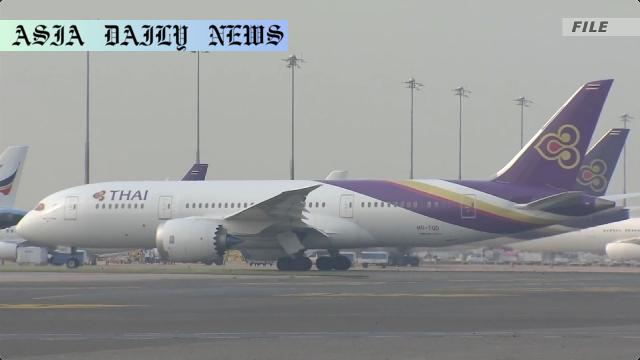Thai Airways successfully exits debt restructuring process through rehabilitation and organizational improvements.
Thai Airways has successfully exited its debt restructuring process.
The airline originally entered bankruptcy with debts of 400 billion baht in 2020.
It has rehabilitated its operations and expects to repay remaining debt by 2036.
Plans include relisting on Thailand’s stock exchange by August.

Introduction: Thai Airways’ Remarkable Comeback
In a notable turn of events, Thai Airways, one of Thailand’s flagship carriers, has successfully emerged from its debt restructuring program after years of financial turmoil. Struggling under the weight of approximately 400 billion baht (about $12 billion) in debt, the airline filed for bankruptcy in 2020—a low point exacerbated by fierce market competition and a global pandemic that ravaged the aviation sector. With its exit from this process, Thai Airways demonstrates the success of its comprehensive rehabilitation efforts and organizational restructuring.
The Debt Crisis: Challenges Leading to Bankruptcy
The road to recovery has been challenging for Thai Airways. The airline faced increasing competition from low-cost carriers, which steadily gained market share in Southeast Asia. Coupled with the sudden and dramatic downturn of global travel during the COVID-19 pandemic, the airline’s financial health deteriorated rapidly. By 2020, Thai Airways had accumulated an insurmountable debt of 400 billion baht. The company sought bankruptcy protection to restructure its operations and finances, signaling the start of a long journey to recovery.
Strategies for Rehabilitation: A Restructuring Success Story
To address its financial woes, Thai Airways embarked on a rigorous organizational restructuring plan. This included cost-cutting measures, renegotiating existing contracts, and streamlining operations. Additionally, the airline revamped its business strategy to align with a rapidly changing market, focusing on improving customer satisfaction and operational efficiency. The restructuring plan emphasized the importance of consolidating resources to focus on profitable routes and services.
Looking Ahead: Debt Repayment and Future Goals
Despite having successfully exited the restructuring program, Thai Airways still faces long-term financial obligations. As of now, the airline has approximately 95 billion baht (around $3 billion) remaining in debt, which it plans to pay off by 2036. This ambitious repayment schedule highlights the airline’s commitment to financial stability and operational excellence. The company has also outlined plans to relist on Thailand’s stock exchange by August, signaling its readiness to re-engage with investors and stakeholders.
Implications for the Aviation Industry
Thai Airways’ successful emergence from bankruptcy sets a positive precedent for the broader aviation industry. It demonstrates that even under dire financial conditions, strategic planning and disciplined execution can lead to recovery. Amid an era of uncertainty in global travel, the company’s turnaround story offers valuable lessons for airlines facing similar circumstances. Moreover, it underscores the importance of adaptability, innovation, and a customer-centric approach in sustaining long-term growth and competitiveness.
Conclusion: A Bright Future for Thai Airways
The airline’s remarkable recovery serves as a testament to its resilience and strategic acumen. By effectively addressing its debt crisis and implementing necessary reforms, Thai Airways has set the stage for a brighter future. As it gears up to achieve its repayment goals and plans for a stock market relisting, the company stands as a beacon of hope for other struggling airlines. With a renewed focus on operational efficiency and financial stability, Thai Airways is well-positioned to reclaim its status as a leader in the aviation industry.



Commentary
Thai Airways: A Case Study in Resilience
Thai Airways’ journey from financial turmoil to recovery is a story that resonates with triumph and resilience. The airline, once drowning under the weight of its colossal debt, managed to overcome its challenges through strategic foresight and meticulous planning. Emerging successfully from bankruptcy has not only restored the company’s reputation but has also set a new benchmark for corporate recovery in the aviation industry.
The Role of Strategy in Recovery
What stands out in Thai Airways’ recovery is the emphasis placed on strategic organizational restructuring. By focusing on profitability, cutting unnecessary expenses, and renegotiating contracts, Thai Airways demonstrated how companies can adapt even in highly volatile markets. This is a crucial takeaway for corporations in similar predicaments. Having a clear plan, coupled with a willingness to make tough decisions, can pave the way for sustainable growth and success.
Future Opportunities and Challenges
While it is commendable that Thai Airways has exited the restructuring program, the journey does not end here. The company is still shouldering a significant debt burden of 95 billion baht, which it plans to pay down by 2036. Achieving this goal requires unwavering focus and continued operational improvements. Additionally, relisting on the stock exchange presents an opportunity for the carrier to attract investments and rebuild stakeholder confidence.
A Lesson for the Aviation Sector
Thai Airways’ story is more than just a corporate turnaround—it is a valuable lesson for the entire aviation sector. Airlines worldwide, grappling with the long-term effects of the COVID-19 pandemic, can draw insights from Thai Airways’ ability to adapt and evolve. The carrier’s focus on sustainable operations and financial restructuring serves as a roadmap for navigating challenging times while looking toward a brighter future.